- Home
- Muriel Spark
The Golden Fleece Page 2
The Golden Fleece Read online
Page 2
Legend tells us further how the King of Thessaly, desiring to dispose of his nephew Jason, the rightful heir to the throne, claimed that the golden fleece belonged to his household. Believing that the recovery of the fleece was an impossibility, the King commanded Jason to fetch it, hoping that he would be lost through the perils of the journey. Jason was undaunted. Runners were dispatched to all parts of Greece, calling on the heroes of mythology to join the young prince on his dangerous mission. Hercules the giant, Orpheus the singer, Canthus the soothsayer, the twins, Castor and Pollux, and many others came flocking to take part in the adventure. In high spirits the gallant company set sail in the Argo, unconcerned that the way to the golden fleece was fraught with direst peril.
However, after many trials, the fleece was finally won with the help of Princess Medea of Colchis, who afterwards married Jason. We are told with what joy and expectations Jason brought the golden fleece back to Thessaly. Instead, however, of regaining his place as heir to the kingdom, Jason fell foul of his uncle, who dispossessed and banished him. Such is the legend.
It was Philip the Good, Duke of Burgundy, who founded the Order of the Golden Fleece on the day of his marriage (January 10) to Princess Isabella of Portugal in 1429–30. History does not record the year with exactitude, nor is it known whether or not Philip was inspired by the ancient legend or whether he chose the name from some other motive. We know, however, that the House of Burgundy had become so powerful during the fourteenth and fifteenth centuries as to rival the Crown itself.
Philip the Good was himself a man who lived a life of high purpose – he devoted himself to the development of culture and learning, and became an enthusiastic protector of the arts. He had records made of Burgundian customs, and the commerce and industry of France thrived under his encouragement. It would seem reasonable to conjecture that, having decided to install a new European Order of Chivalry, Philip turned to the Golden Fleece because of its significance as a symbol of spiritual intervention.
Whatever be the true reason, it is clear that in its design the insignia was in no sense a rich ornament lavishly set with precious gems as one might have expected in those days of rich embellishment and ornamentation. The collar was made of steel, the pattern in the form of an arrangement of the letter B (Burgundy), alternating with firestones. From this simple collar hung the symbolical Golden Fleece forming the badge. The enamelled ring from which the badge hung bore the legend ‘Pretium laborum no vile’ – ‘Not an unworthy reward for our labours’. The Knights were encouraged to wear their insignia constantly, which they did with dignity and pride.
The ceremony of conferring the Order of the Golden Fleece was an elaborate one. A Knight of the Order in a capacity of ‘godfather’ presented the new member, and a Secretary of high rank delivered a speech of presentation in French. The collar and emblem of the Order were the Knight’s property throughout his lifetime, but at his death they reverted to the Order.
At first the Knights of the Golden Fleece were limited to thirty-one, including the Sovereign, who was the Grand Master, but it was later declared that any number might be created from among Catholics; in the case of Protestants, Papal sanction was required. The Knights’ primary duty was to aid the Sovereign in times of war and danger. Periodic meetings or Chapters of the Order were held at which all disputes between Knights were settled.
Who, then, were these Knights of the Golden Fleece who fire our imagination by their chivalry and valour? At first they were chosen from the distinguished houses of Burgundy, the Netherlands and France – men who conformed to the founder’s ideal of knightly honour and noble birth. Not all the subsequent Grand Masters of the Order, however, possessed such lofty principles as its founder. As time went on the dispensation of the Order sometimes became a matter of diplomatic expediency.
Although the Order of the Golden Fleece was bestowed for the most part on royalty and men of noble rank, it has not been exclusively so, for in 1898 the Crown of Spain conferred this honour on the President of France, Felix Faure, in recognition of the mediation of France at the termination of the Spanish-American war.
As the dukedom passed from Philip to his son Charles the Bold, so did the Order of the Golden Fleece continue under the aegis of the House of Burgundy. However, when Charles’ daughter Mary married Maximilian, Archduke of Austria, a gallant but unreliable gentleman, the Grand Mastership of the Fleece came into the possession of the royal House of Hapsburg. Maximilian’s son, on his accession to Castile in 1504, brought the Grand Mastership of the Order to Spain, where it remained until the Hapsburg dynasty became extinct on the death of Charles II.
The Order of the Golden Fleece then reverted to Austria, having been claimed by the Emperor, Charles VI, who installed the Order in Vienna with great pageantry, in 1713. This action was bitterly contested by Philip V of Anjou, inheritor of the Crown of Spain by the will of Charles II. Philip V maintained that the Grand Mastership of the Fleece was irrevocably bound to the throne of Spain, and at the Congress of Cambray he formally protested against the Emperor of Austria’s claim. The dispute was settled temporarily by the intervention of England, France and Holland, but a state of ferment still existed, and it was not long before Spain and Austria were again involved in heated argument. No definite solution was ever found. It came to be tacitly accepted that the Order existed in both countries, becoming known either as the Spanish or the Austrian Order of the Golden Fleece.
The Austrian branch of the Order permitted a red ribbon to be substituted, except on occasions of ceremony, when a Knight of the Golden Fleece must have presented a magnificent appearance. On such occasions he wore a surcoat of deep red velvet lined with white, over which was thrown a purple velvet mantle, white-bordered and lined with white satin. Gold embroidery encrusted with firestones further adorned this splendid attire. His cap was of purple velvet, gold-embroidered, with a small hood attached, and his shoes and stockings were Burgundian red.
Edward IV of England, a kinsman through marriage of the House of Burgundy, was the first English monarch to receive the Order of the Golden Fleece.
Henry VII was invested with the Order in 1491, the year of his signing of the Treaty of Medina del Campo with Maximilian of Austria – a security against their mutual enemy, France.
By his betrothal to Catherine of Aragon, in 1502, Henry VIII was elected to the Order at the 77th Chapter, and his contemporary, James V of Scotland, also became a Knight of the Order. A wardrobe Inventory of James V, dated 1539, records ‘The ordure of the Empriour with the golden fleis’.
The history of this romantic Order of Knighthood is recorded for us in the tapestries and embroideries at Berne, embellished with the arms of Burgundy and the insignia of the Golden Fleece, in the banners at Saint Gall, bearing the Fleece device, and in the paintings which remain to us of those men who attained the honour. Notable among these is the Duke of Wellington – one of the few Englishmen to receive the Order – and whose portrait wearing the Golden Fleece is to be seen at the National Portrait Gallery.
[1948]
The First Christmas Eve
It is always good to see a painting in the very surroundings in which it was conceived and made. Frescoes have a greater chance of resting in their original home than other forms of pictorial art, and this is especially fortunate in the case of the fifteenth-century Tuscan artist Piero della Francesca. His mural sequence, La Leggenda della Vera Croce (The Legend of the True Cross), for instance, is in perpetual harmony with the interior of the Church of Saint Francis, in Arezzo, whose walls it enlivens. His Madonna del Parto (Madonna of Childbirth), although it has been shifted, remains in its native pastoral and fertile environment near the spot where Piero painted it, some time after 1450, on the wall of a church later demolished.* Originally, the fresco was the only adornment of a tiny cemetery chapel which replaced the church, situated below the quiet Tuscan hill town of Monterchi. The picture (which has been moved again to a spot nearby) is easily accessible from the road between Ar
ezzo and Sansepolcro, birthplace of Piero della Francesca and repository of many of his richest works.
Piero’s mother came from Monterchi, which is probably why, at the height of his maturity, he accepted the commission to depict the Madonna in so quiet and unimportant a place. Everything about this painting is dramatic. The Madonna is in the last stage of her pregnancy. The Nativity is imminent.
Piero della Francesca was a humanist with a deep sense of the sublime. His Madonna (Our Lady of Childbirth) is a substantial country woman and at the same time a majestic, archetypal figure. In no way is she the sort of Italian girl whom anyone might want to help with her problem: this lady has no problem, she has a purpose. She stands in an ermine-lined tent, a tabernacle.† She is larger than the angels who, like theatre functionaries, draw back the curtains for the audience, the entire human race, to witness Mary’s marvellous condition at this hour. She is wearing a practical maternity dress, which unlaces at the side and in the front to accommodate her splendid bigness with child. Her right hand loosens the lacing of her dress, her left hand rests on her hip, palm upward, in a peasant-like gesture of pride, almost defiance. She wears a halo of burnished gold which mysteriously mirrors the pavements of the original church, but not her own head, so that she, like the angels, seems to be transparent in the light of eternity. She bears this halo with the dignity of a local woman of Tuscany balancing a basket of fruit on her head. The curtains of the womb-like tent part to reveal her – as if, about to deliver her child, she is herself about to be delivered from a vaster, cosmic womb.
It is a Christian devotional picture, that of the first Christmas Eve. But the Madonna del Parto, with her radiant and aloof regard, her eyes focused somewhere beyond the ages, seems equally to belong to the ancient reaches of mythology and to our human destiny.
In Piero’s time there was great theological controversy. The Renaissance questioned everything. What was the nature of the Virgin? Was she just an ordinary woman or was she of the divine essence? Questions about spirit and substance were argued endlessly. What is spirit? What is substance? To-day we know more about substance than ever before, but the more we know the more it is recognised that we know nothing. Five hundred years have taught us nothing new about the life of the spirit. Piero della Francesca, like all great artists, did not accept any dichotomy between spirit and matter. There is no spirit without substance; the whole of nature is impregnated with spiritual life. His Madonna del Parto, one of the few pregnant Madonnas, is both human and touched with divine revelation. It is a work that reposes in its own mystery: Life emerging into the life of the world, Light into its light.
[1984]
* According to my local telephone directory, which features the fresco on its cover, the Madonna del Parto was probably painted in 1445 and discovered at Monterchi in 1888. It has been moved to a local school-house in Monterchi, where it is exhibited in a greatly reduced form with much photographic analysis and information to justify its partial obliteration. Parts of the painting which were not done by Piero della Francesca were removed. When consulted earlier as to whether the fresco should be moved for exhibition in America, the eminent art historian Sir John Pope-Hennessy emphatically said, ‘No, on no account should it be moved.’
† This ‘ermine-lined tent or tabernacle’ has been removed.
Love
There are many types of love. In ancient Greece from whence all ideas flow, there were seven main words for love. Maternal love is like, but not the same as, love of country or love between friends. And love of fellow men and women which the old Bibles called charity is also something akin to these, but different.
What I’m writing about here is exclusively the love we mean when we are ‘in love’; and it includes a certain amount of passion and desire, a certain amount of madness while it lasts. Its main feature is that you cannot argue about it. The most unlikely people may fall in love with each other; their friends, amazed, look for the reason. This is useless; there is no reason. The lovers themselves may try to explain it: ‘her beautiful eyes’, ‘his lovely manners, his brains’, and so on. But these claims never fit the case comprehensively. For love is inexplicable. It is something like poetry Certainly, you can analyse it and expound its various senses and intentions, but there is always something left over, mysteriously hovering between music and meaning.
It is said that love is blind. I don’t agree. I think that, on the contrary, love sharpens the perceptions. The lovers see especially clearly, but often irrationally; they like what they perceive even if, in anyone else, they wouldn’t. They see the reality and something extra. Proust, one of the greatest writers on the subject of love, shows, in his love-story of Swann and Odette, how Swann, civilised, well-bred and artistic, saw perfectly clearly that Odette was vulgar, promiscuous and not at all a suitable partner for him in the Parisian world of his time. Right at the end of a section of the book Swann even resigned himself to the loss of Odette: ‘After all, she was not my style’; nevertheless, at the beginning of the next chapter Swann is already married to Odette, because he adored her, and couldn’t resist her, even while unhappily knowing and loving the worst about her.
Falling in love is by nature an unforeseen and chance affair, but it is limited by the factor of opportunity. The number of people in the world any one person can meet is comparatively few, and this is usually further limited by occasions of meeting. In The Tempest, Miranda exclaims when she first sees Ferdinand:
I might call him
a thing divine, for nothing natural
I ever saw so noble.
But if she had never seen Ferdinand – if there had been no storm, no shipwreck, to bring him into her life? Undoubtedly this nubile maiden would eventually have become infatuated with Caliban. Even though she has said of him,
’Tis a villain, sir,
I do not love to look on.
– Miranda would inevitably have become enamoured of the monster, knowing him, by comparison with her father, who was taboo, to be hideous; because Caliban was the only available male within her range of opportunity. Prospero, of course, was aware of this danger.
To-day there is an English aristocratic family, of which the four daughters have all married dukes and earls; and, goes the apocryphal story, when the mother is asked how she managed to marry her daughters ‘so well’, she replies, ‘They never got to meet anyone else but dukes and earls.’ If the story isn’t true, it’s to the point.
Love is not blind and it is also not deaf. It is possible to fall in love with a voice, a timbre, a certain way of talking, a charming accent. Many inexplicable love affairs, especially those of the long past where we only have photographs or paintings to go by, would probably be better understood if we could hear the lovers speak. Many a warped-looking and ill-favoured Caliban has been endowed with a winning, mellow and irresistible voice. Many a shapely and gorgeous Ferdinand caws like an adenoidal crow. And the same with women – one often sees how a husky, sexy voice takes a raddled face further in love than does a little-girl twang issuing from a smooth-cheeked nymph.
The first time I was aware of two people in love was when an English master and an art-mistress at my school got engaged. They observed the utmost discretion in front of the girls, but we registered their every move and glance when they happened to meet in the corridors. We exchanged endless information on this subject. These two teachers were not at all lover-like. Both were already middle-aged, and alas must now be dead. He was tall and gawky with a long horse-like face, and eyes, too, not unhorselike. She was dumpy, with the same shape over and under her waist, which was more or less tied-in round the middle. They were both pleasant characters. I liked him better, because he was fond of English literature; she, on the other hand, was inclined to stick her forefinger on to my painting and say, ‘What does it mean? It doesn’t mean anything.’ Which of course was true, and I didn’t take it amiss. The only puzzling thing about this love-affair was what he, or anybody, could see in her. What she could see in him
was also difficult to place, but still, he had something you could call ‘personality’. She, none. We pondered on this at the same time as we noted how he followed her with his eyes – they were dark, and vertically long – and how she, apparently oblivious of his enamoured long-eyed look, would stump off upon her stodgy way, on her little peg-like legs, with never a smile nor a light in her eyes. One thing we learned: love is incomprehensible. He saw the same person as we saw, but he saw something extra. It never occurred to us to think that perhaps she was an excellent cook, which might very likely have been the magic element in the love-affair. It might also have been the case that neither of them had really had time to meet anybody else.
Observing people in love has a certain charm and sometimes, entertainment value. But to my mind watching them actually making love is something different. I find it most unappealing to walk through a London park on a mild spring day and find the grass littered with couples making love. It turns me up, it turns me off. I don’t understand how voyeurism turns people on.
With animals, strangely enough I feel the opposite. I live most of the time in the Italian countryside, and nothing is more attractive and moving than to look out of the window on a sunny morning, as I did recently, and see a couple of young hares making love. He hopped towards her, she hopped away. He hopped and she hopped through the long grass, till at last he hopped on. Then, too, not long ago, driving with a friend down a country road we had to stop while a horse mated with a mare. There were a number of cars but we all lined up respectfully and with deep interest for it was known that the owner of the horses, who was standing by, depended for his living on events like this, and was delighted that the horse had at last arrived at his decision, even in the middle of the road. The horse mounted the mare slowly, laid his nose dreamily along her flank, entered her precisely, and performed without bungle. The horse-coper radiated joy and success. The horse and mare moved off casually into a field and the caravan of cars went its way.

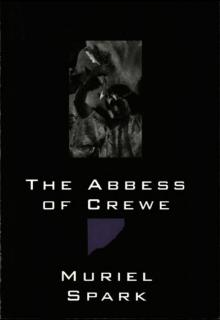 The Abbess of Crewe: A Modern Morality Tale
The Abbess of Crewe: A Modern Morality Tale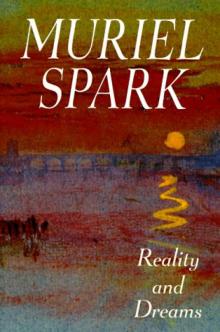 Reality and Dreams
Reality and Dreams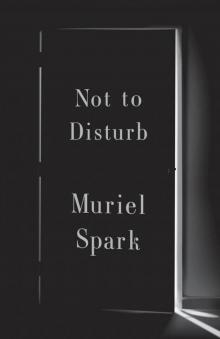 Not to Disturb
Not to Disturb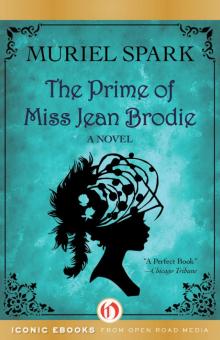 The Prime of Miss Jean Brodie
The Prime of Miss Jean Brodie The Hothouse by the East River
The Hothouse by the East River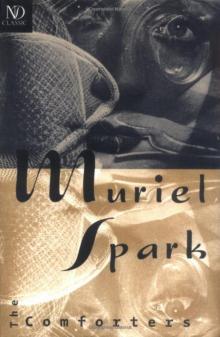 The Comforters
The Comforters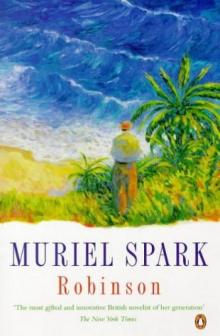 (1958) Robinson
(1958) Robinson Unknown
Unknown Memento Mori
Memento Mori The Finishing School
The Finishing School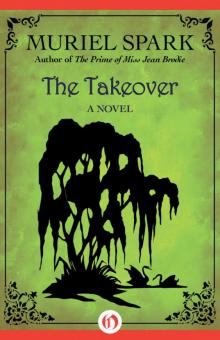 The Takeover
The Takeover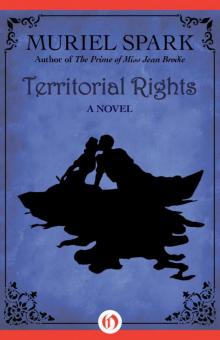 Territorial Rights
Territorial Rights The Complete Short Stories
The Complete Short Stories The Golden Fleece: Essays
The Golden Fleece: Essays The Ballad of Peckham Rye
The Ballad of Peckham Rye Doctors of Philosophy: A Play
Doctors of Philosophy: A Play The Mandelbaum Gate
The Mandelbaum Gate Loitering With Intent
Loitering With Intent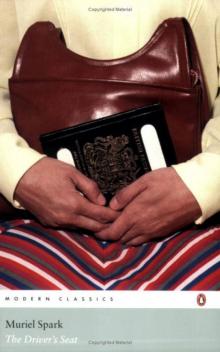 The Driver's Seat
The Driver's Seat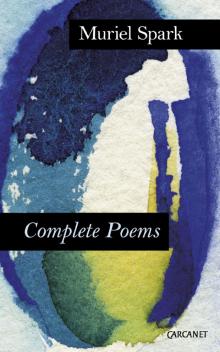 Complete Poems: Muriel Spark
Complete Poems: Muriel Spark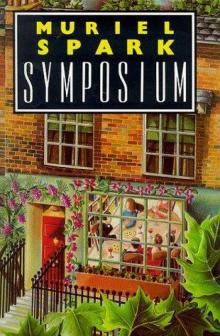 Symposium
Symposium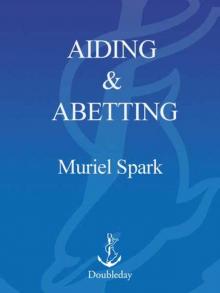 Aiding and Abetting
Aiding and Abetting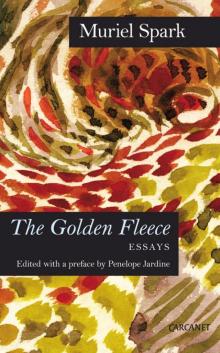 The Golden Fleece
The Golden Fleece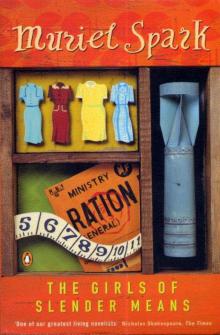 The Girls of Slender Means
The Girls of Slender Means Alice Long’s Dachshunds
Alice Long’s Dachshunds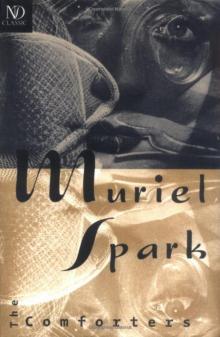 (1954) The Comforters
(1954) The Comforters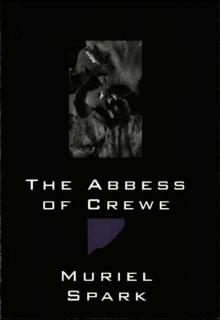 The Abbess of Crewe
The Abbess of Crewe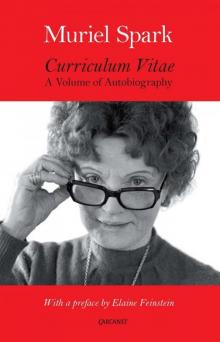 Curriculum Vitae
Curriculum Vitae The Only Problem
The Only Problem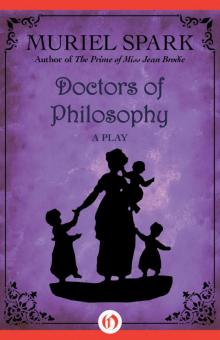 Doctors of Philosophy
Doctors of Philosophy